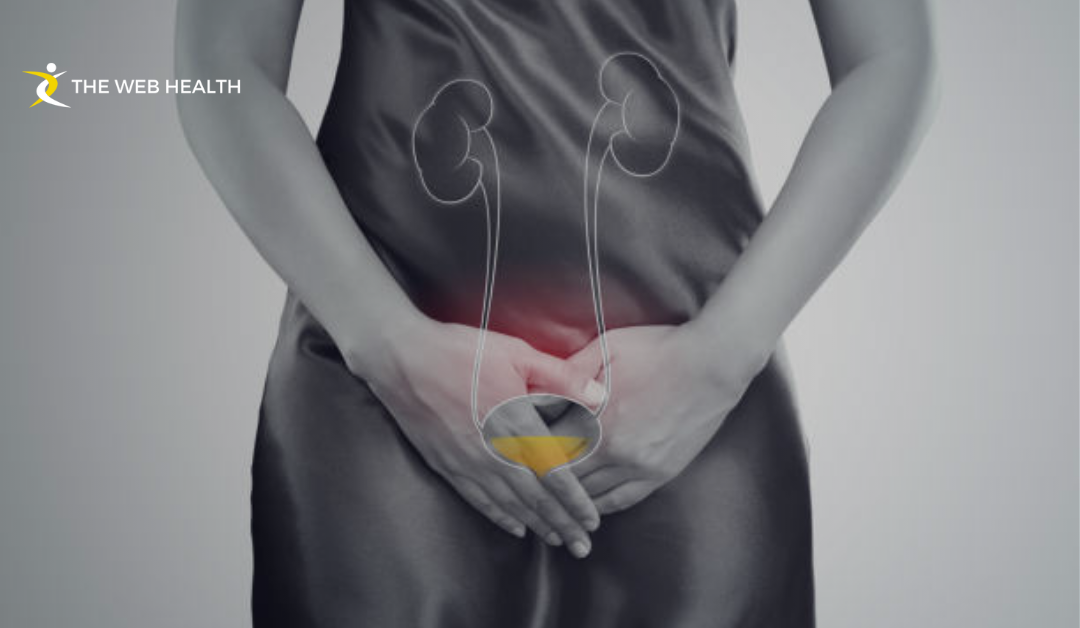One of the most common bacterial infections, urinary tract infections (UTIs) affect millions yearly. Worldwide, more than 150 million cases occur annually, and between 1990 and 2019, UTI cases increased by 60.4%, from 252 million to 404 million. This steep rise signals a growing public health concern, particularly with the rise of antibiotic resistance.
These infections can escalate quickly if untreated, sometimes leading to kidney infections or life-threatening sepsis.
Read on to learn everything you need to know about UTIs—so you can stay informed.
What Is a UTI?

It occurs when bacteria enter the urinary system and start to multiply. This system includes:
- Kidneys
- Bladder
- Ureters
- Urethra
UTIs most commonly affect the bladder and urethra. If the infection moves to the kidneys, it can be serious.
A UTI is more common in women than in men because they have a shorter urethra, allowing bacteria to reach the bladder more easily. But men, kids, and older adults can also get UTIs.
What Causes UTIs?
UTIs occur when bacteria enter the urinary tract. The most common cause is E. coli, a type of bacteria found in the digestive system. Other bacteria and fungi can also trigger infections.
Here are some common causes:
- Poor Hygiene – Not wiping correctly (especially for women) or holding the urine for too long can allow bacteria to grow.
- Sexual Activity – Bacteria can enter the urethra during sex, increasing the chance of infection. This risk is increased among those with many new partners or those with sex addiction issues.
- Hormonal Changes –Pregnancy and menopause or birth control methods increase the likelihood of the urinary tract getting susceptible to the bacteria.
- Urinary Tract Blockages – Kidney stones or an enlarged prostate can trap urine, creating a breeding ground for bacteria.
- Weakened Immune System – Diabetes, chemotherapy, or other illnesses can compromise and make it harder for the body to defeat infections.
- Certain Products – Harsh soaps, douches, and spermicides can irritate the urethra.
- Dehydration – Not drinking enough water makes it harder to flush out bacteria.
Signs of a UTI in Women vs. Men
UTIs can feel different for everyone, but some common signs help identify an infection. While both men and women share some symptoms, there are key differences based on anatomy and how the infection spreads.
UTI Symptoms in Women
As mentioned before, women are prone to urinary tract infections because their urethra is shorter, which means bacteria can access the bladder more easily. The most commonly reported symptoms are:
- Frequent urge to urinate – You may have an urge to go even if not a lot of urine comes out
- Burning sensation while urinating — A burning feeling can happen each time you urinate.
- Cloudy or foul-smelling urine — The urine can appear cloudy, have a pungent smell, or show traces of blood.
- Pelvic pain — A feeling of pressure near the bladder or discomfort in the lower belly is normal.
Women may also have fatigue, mild fever, or nausea if the infection advances.
UTI Symptoms in Men
While less common in men, UTIs can be more serious when they do happen. Symptoms may include:
- Lower abdominal pain — A dull ache (or a sharp pain) may occur near the bladder.
- Pain within the penis – Some men experience irritation at the tip of the urethra or burn.
- Incontinence – In some cases, men can be unable to hold their urine.
- Fever and chills – If the infection reaches the kidneys, expect a high fever and body aches.
Men who experience UTIs often have symptoms more characteristic of prostate infections, making the possible early diagnosis relevant.
When to See a Doctor
A mild UTI might resolve itself, but some symptoms indicate it’s time to seek medical help:
- Symptoms that continue for more than two days
- Blood in urine
- High fever and back pain
Having the correct treatment early can prevent complications and help you recover quicker. You also shouldn’t wait to see a doctor if you notice any of these symptoms.
Can Men Get UTIs?
Yes, men can have UTIs as well, but it is not as frequent as in women. This is largely because men have a longer urethra, making it more difficult for bacteria to make its way up to the bladder. But when men get them, they can be more serious and harder to treat.
Why Are UTIs in Men Less Common?
- Longer urethra – It takes longer for bacteria to reach the bladder.
- Protective fluids produced by the prostate – The prostate secretes fluids that destroy bacteria.
- Lower exposure to infectious sources – Women’s anatomy predisposes them to have infections and men have fewer risk factors.
When Do Men Get UTIs?
In men, UTIs are less common, but they can occur due to:
- Enlarged prostate — This can obstruct urine flow, resulting in bacterial growth.
- Not fully emptying the bladder — This occurs with age or prostate problems.
- Kidney stones — which can trap bacteria in the urinary tract.
- Catheter use — A catheter (a tube used to drain urine) raises infection risk.
- Weakened immune system — Things like diabetes increase the chances of infection.
Are UTIs in Men More Dangerous?
Yes. If untreated, a UTI in men can spread to the kidneys or prostate. Prostate infections (prostatitis) are uncomfortable and require longer healing times. In some cases, the infection can invade the bloodstream, resulting in serious complications.
How Can Men Prevent UTIs?
- Plenty of water — Helps to flush out bacteria.
- Empty the bladder completely — Prevents bacteria growth
- And practice good hygiene — Clean the genital area on a daily basis.
- Pee after sex — Helps flush out bacteria.
How Is a UTI Diagnosed?
If you have UTI symptoms, a doctor will run a few tests to confirm the infection. Early diagnosis helps prevent complications and speeds up recovery.
Most Common Tests Used to Diagnose UTI
Urine Sample (Urinalysis)
- This is the most common test. You give a urine sample, and doctors test for the presence of bacteria, white blood cells and blood in the urine.
- The sample should be “clean-catch,” which means that you wipe the area first and catch midstream urine to avoid contamination.
Urine Culture
- If hints of infection appear in the urinalysis, a urine culture is done.
- This test determines the type of bacteria that’s causing the UTI and assists the doctors in selecting the appropriate antibiotic.
Imaging Tests (for Serious or Recurrent UTIs)
- Ultrasound – Looks for kidney stones or obstructions.
- CT Scan – Provides a detailed view of the urinary tract.
- Cystoscopy – A thin tube with a camera is inserted into the bladder to look for abnormalities.
When Do You Need Extra Tests?
- If you have frequent UTIs — Doctors look for underlying problems such as kidney issues or an enlarged prostate.
- If antibiotics don’t work — A urine culture helps identify the best treatment.
- If symptoms are severe — Lower back pain, high fever, or blood in urine may indicate the infection has spread.

What Is the Best Antibiotic for a UTI?
UTIs are typically treated with antibiotics. The right antibiotic depends on what kind of bacteria is causing the infection and your medical history.
Commonly Prescribed Antibiotics for UTIs
Antibiotic |
How It Works |
Typical Duration |
| Nitrofurantoin (Macrobid, Macrodantin) | Kills bacteria in the bladder | 5-7 days |
| Trimethoprim-Sulfamethoxazole (Bactrim, Septra) | Stops bacterial growth | 3-5 days |
| Fosfomycin (Monurol) | Single-dose antibiotic | 1 day |
| Ciprofloxacin, Levofloxacin (Fluoroquinolones) | Used for complicated UTIs | 7-14 days |
| Amoxicillin-Clavulanate (Augmentin) | Used when other antibiotics don’t work | 5-7 days |
How to Take Antibiotics Correctly
- Finish the full course – Even if symptoms go away, stopping early can lead to antibiotic resistance.
- Drink lots of water – Helps flush out bacteria faster.
- Avoid alcohol – Some antibiotics don’t mix well with alcohol.
What If Antibiotics Don’t Work?
- The bacteria might be resistant, and doctors will prescribe a different antibiotic.
- A urine culture can help find a more effective treatment.
- If the UTI spreads to the kidneys, IV antibiotics may be needed.
Home remedies may help prevent future infections in mild cases, but they won’t cure a U.T.I.
Well, let us see some home remedies.
Home Treatment & Natural Remedies for UTIs
Antibiotics are the primary treatment for UTIs, but you may also find home remedies that can help ease your symptoms and speed up recovery. These must always be used as complementary to the medications prescribed by a doctor, not as a substitute.
1. Drink Plenty of Water
Water helps flush out bacteria from the urinary tract. Aim for at least 8 glasses a day to stay hydrated and reduce the risk of infection. If you already have a UTI, drinking water can help clear out the infection faster.
2. Use Heat Pads
Placing a heating pad on your lower abdomen can help relieve the pain and discomfort caused by a UTI. Just make sure the heat is not too hot to avoid skin burns.
3. Drink Cranberry Juice
There are numerous benefits of Cranberry juice. It can help prevent bacteria from sticking to the walls of the urinary tract. While it’s not a cure for an active UTI, drinking unsweetened cranberry juice daily can lower the risk of future infections. Avoid sugary cranberry drinks, as sugar can worsen symptoms.
4. Probiotics
Probiotics can restore healthy bacteria in the body, especially after taking antibiotics. These can help maintain a healthy balance of bacteria in your urinary tract, preventing future UTIs. You can find probiotics in yogurt or as supplements.
5. Vitamin C
Vitamin C can acidify the urine, making it harder for bacteria to grow. Some people use vitamin C supplements or eat foods like oranges and strawberries to boost their vitamin C levels.
6. Avoid Irritating Products
Certain products like scented soaps, bubble baths, or feminine hygiene sprays can irritate the urinary tract and make a UTI worse. Stick to gentle, unscented products to prevent further irritation.
7. Herbal Remedies
Some herbs, such as uva-ursi, garlic, and ginger, have been traditionally used to support urinary tract health. However, always consult your doctor before using herbal supplements, as they may interfere with medications or have side effects.
8. Proper Hygiene
Maintaining good hygiene is key to preventing and managing UTIs. After using the bathroom, always wipe from front to back to avoid transferring bacteria from the anus to the urethra.
How to Prevent UTIs?
While it’s not always possible to prevent UTIs, there are steps you can take to reduce your risk and keep your urinary tract healthy.
1. Stay Hydrated
Drinking enough water throughout the day helps to flush bacteria from your system. Make it a habit to drink at least 8 glasses of water daily, and more if you’re active or in a hot climate.
2. Urinate When You Need To
Don’t hold in urine for long periods. Urinating regularly helps flush out bacteria from the urinary tract. After sexual activity, it’s also important to urinate as soon as possible to help remove any bacteria that may have been introduced.
3. Wipe Properly
Always wipe from front to back after using the toilet. This helps avoid spreading bacteria from the anus to the urethra, which can lead to UTIs.
4. Wear Cotton Underwear
Cotton allows your body to breathe, reducing the chance of bacteria growing. Tight, synthetic clothing can trap moisture and bacteria, increasing the risk of infection. Choose loose-fitting clothes and cotton underwear for better airflow.
5. Avoid Irritating Products
As mentioned earlier, avoid using scented feminine products or bubble baths that can irritate the urinary tract. These products can disrupt the natural balance of bacteria in the area and increase your chances of infection.
6. Take Showers Instead of Baths
Baths, especially hot ones, can introduce bacteria into the urinary tract. Showers are a better option for keeping the area clean and reducing the risk of infection.
7. Use Urinary Tract Health Supplements
Some supplements, such as D-mannose, can help prevent bacteria from attaching to the urinary tract. Talk to your doctor about adding them to your routine.
8. Consider Probiotics
Maintaining a healthy balance of good bacteria in the urinary tract can help prevent infections. Taking probiotics regularly can support this balance, especially after antibiotic treatment.
FAQs About UTIs
Can You Get a UTI Without Having Sex?
Yes. While sexual activity can introduce bacteria into the urinary tract, UTIs can also happen due to poor hygiene, dehydration, or a weak immune system. Women are more prone to UTIs because their urethra is shorter, making it easier for bacteria to travel to the bladder. Even people who are not sexually active can develop a UTI.
Can UTIs Go Away on Their Own?
Sometimes, mild UTIs may clear up without treatment, especially if you drink plenty of water and maintain good hygiene. However, most UTIs require antibiotics to fully eliminate the infection. Ignoring a UTI can lead to a more serious kidney infection, which can be dangerous. If symptoms last more than two days, see a doctor.
Are UTIs Contagious?
No, UTIs are not contagious. You cannot catch a UTI from another person through touch, sharing bathrooms, or any other contact. However, bacteria that cause UTIs can be spread during sexual activity, so proper hygiene and urinating after sex can help reduce the risk.
Can UTIs Cause Kidney Damage?
Yes. If a UTI is left untreated, the infection can spread to the kidneys. This can lead to a kidney infection (pyelonephritis), which may cause severe pain, fever, and long-term kidney damage. In rare cases, untreated kidney infections can lead to sepsis, a life-threatening condition.


